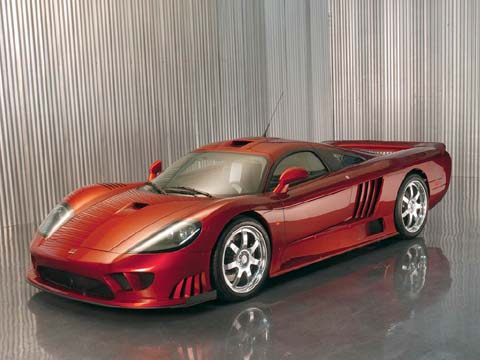Power and Torque
Power and torque are often the selling point of a car; it is always advertised in commercials and talked about among car
enthusiasts. Note that when power and torque is discussed it is always referring to the power and torque of the engine
but this is not the extent of how power or torque applies to a car. This page will discuss what power and torque are and
how they apply to the functionality of a supercar.

http://www.motorintro.com/novedades/_imagesnovedades2005/02_Salon%20de%20Detroit%202005/Saleen%20S7%20Twin%20Turbo.JPG
Power is described by energy over time. This really only applies to the drive train of a car. It is important when analyzing
this system to remember that energy is conserved, so if you notice a loss is energy it has most likely gone into heat through
combustion or friction. Fuel has a given amount of energy which is a very high amount for the volume that it takes up and is
fairly easy and cheap to change into usable. This is why internal combustion engines burn gasoline instead of other
materials. The objective of a drive train is to turn the gases potential energy into usable energy, or in other words,
rotational energy that can then be changed into translational energy via the wheels of the car. As you can imagine there is a
lot of energy loss due to heat during this process. If you are skeptical, feel your car tire after you have been driving; now
imagine that happening at every contact surface inside the drive train. The diagram below describes this process:

Now letís talk about torque. Torque is defined by a perpendicular force multiplied by a distance. As you can imagine there is
torque all over the place on a car. Every time a mechanic turns a bolt on a car there is a certain amount of torque
associated. There is torque happening at the wheels, inside the engine, all over. Torque is very different from power, if you
want a vehicle to burn out you would like to get a lot of torque out of the engine. If you want the car to go up a hill, you
would like a lot of power. Supercars must find a fine balance between the two because the idea is to get the car to accelerate
quickly while still being able to go up to the two hundred mph range. Look at this power vs. torque graph for the GM LS1
engine:

http://www.geareddrives.com/LS-1%20HP%20vs%20Torque.jpg
Notice that the power and torque curve are very independent of eachother
Now let's look at one more application of torque acting on our supercar to better describe why it is better to have a low,
wide design, when cornering, rather than a tall, short design.
Also, keep in mind we are assuming that the sum of the torques is equal to zero because there is minimal angular acceleration.

Now analize the following equations noticing that we are trying to reduce the force F1 to keep the car from flipping over.




Notice that when w, width, increases force 1 decreases and that when h, height, increases force 1 increases. By this observation
we can conclude that in order to reduce force 1, therefore reducing the likely hood of the car to flip, we must increase
the width of the car while decreasing the height of the car.
Previous
...............
Home
...............
Next




